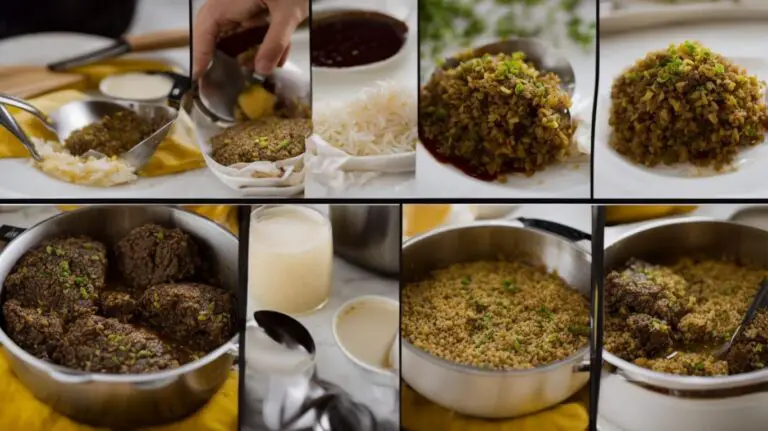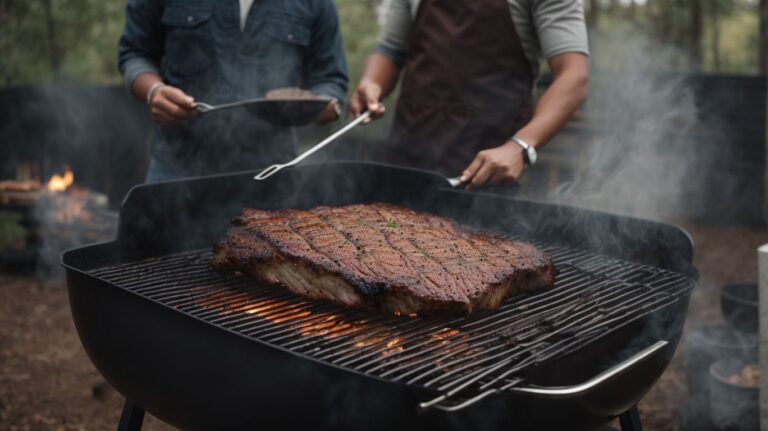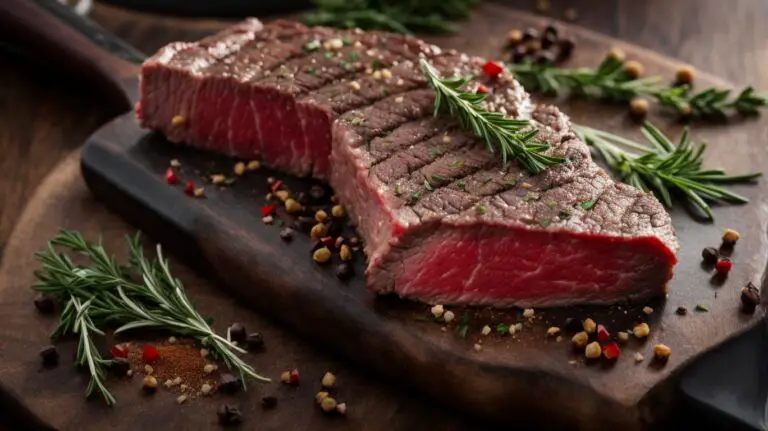How to Cook Pasta to Al Dente?
Have you ever wondered what it means to cook pasta “al dente”?
In this article, we will explore the art of cooking pasta to perfection, ensuring it is neither too soft nor too firm.
From the best types of pasta to use, to the equipment and ingredients you’ll need, we will guide you through each step of the process.
We’ll also highlight common mistakes to avoid and share tips for achieving the perfect al dente pasta every time.
Get ready to elevate your pasta game and enjoy delicious results!
Key Takeaways:
What Does Al Dente Mean?
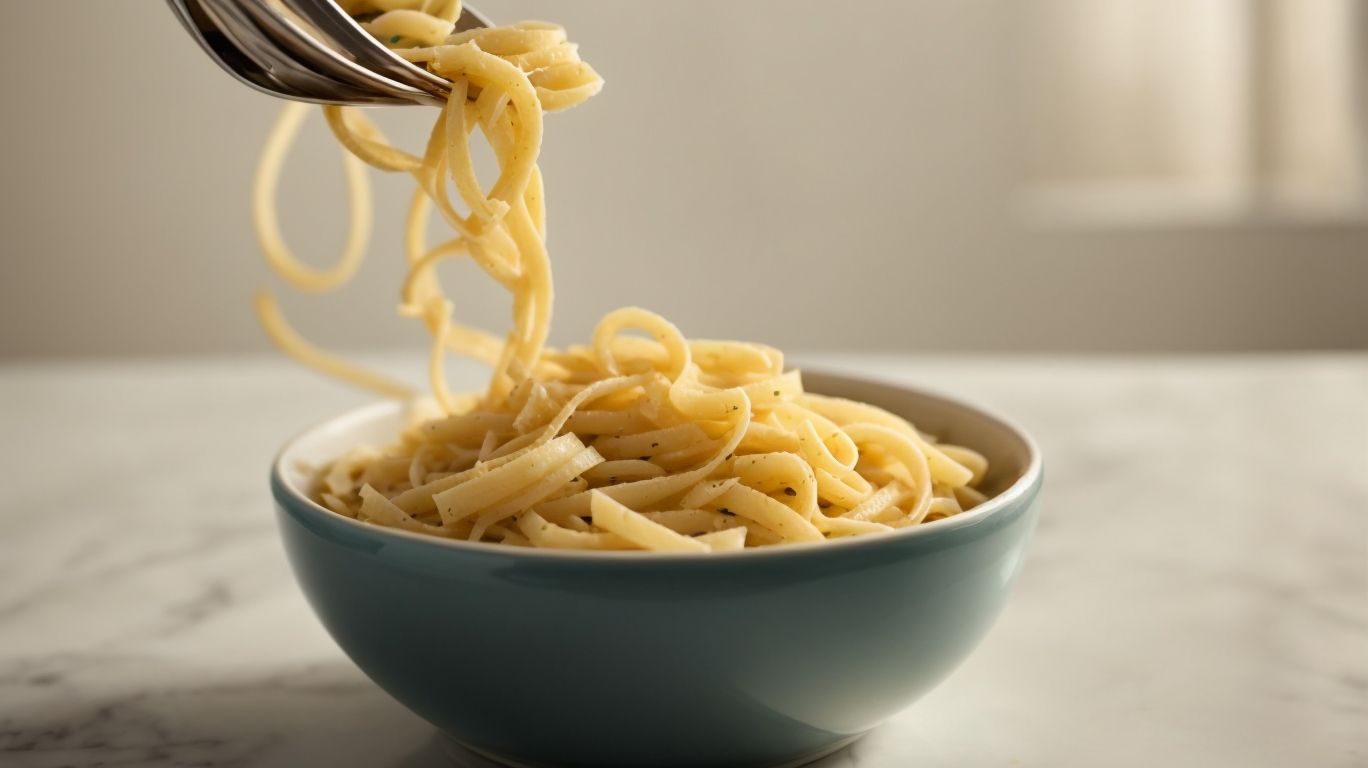
Credits: Poormet.Com – Joseph Green
Al Dente, a term originating from Italian cuisine, refers to pasta that is cooked to be firm to the bite, maintaining a slight resistance in texture.
This precise cooking method is crucial in ensuring that the pasta remains flavorful and retains its shape while being tossed with various sauces without becoming mushy. The concept reflects an artful balance between a tender exterior and a firm core, offering a delightful culinary experience for pasta lovers.
To achieve the Al Dente perfection, it is recommended to follow the traditional Italian practice of cooking the pasta in well-salted boiling water until it reaches the ideal consistency, usually indicated on the package instructions.
What Type of Pasta is Best for Cooking Al Dente?
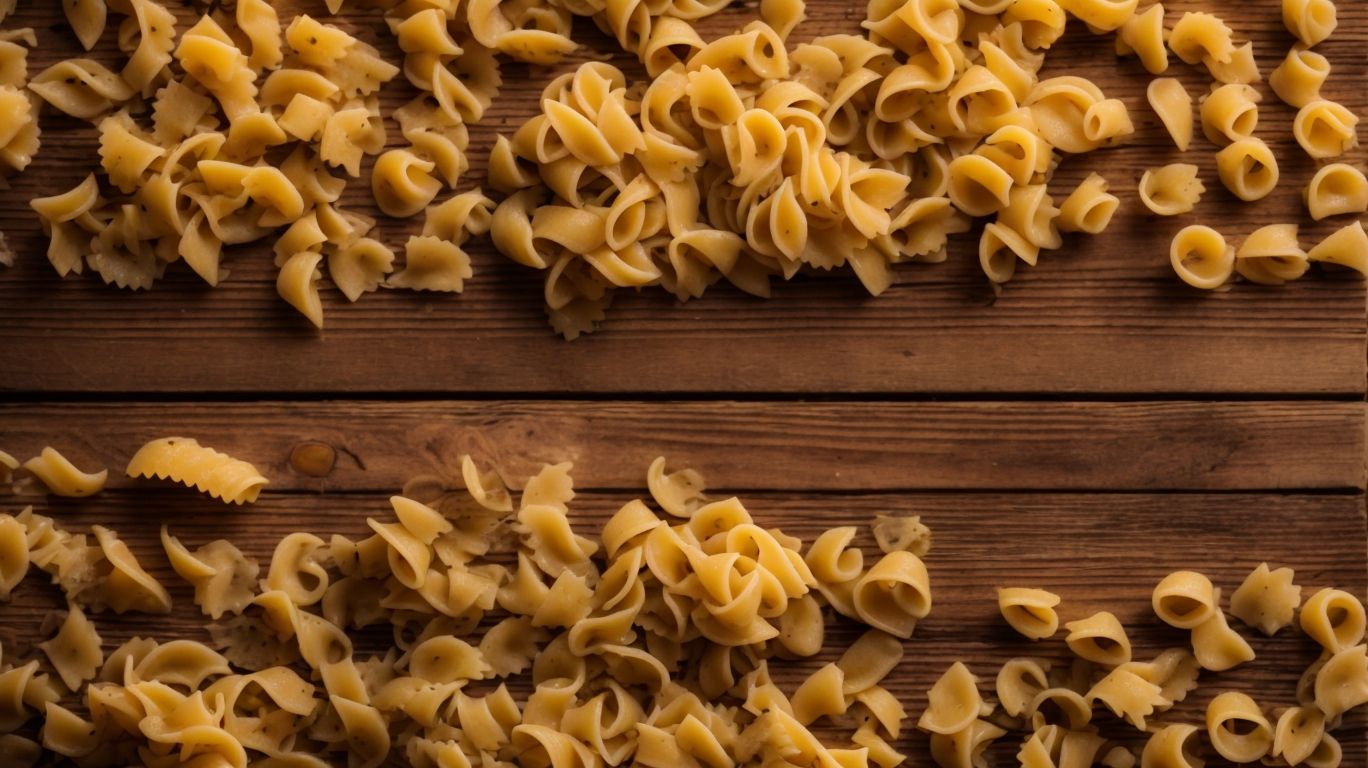
Credits: Poormet.Com – Noah Davis
Selecting the right type of pasta is crucial for achieving the perfect Al Dente texture, with shapes like spaghetti, linguine, and penne being ideal choices.
When cooking Al Dente, the ideal pasta varieties are those that hold their shape well and offer a satisfying ‘bite’ without being too soft or mushy. Spaghetti, with its long, thin strands, is perfect for trapping and carrying sauces. Linguine, slightly wider than spaghetti, is great for thicker sauces as the shape allows the sauce to cling to each strand. Penne, with its hollow center, is excellent for capturing chunky sauce ingredients.
Matching the pasta shape with the specific sauce is vital to enhance the overall dining experience. For instance, creamy sauces pair beautifully with fettuccine, while ridged shapes like rigatoni are perfect for hearty meat sauces. This thoughtful pairing elevates the dish and ensures each ingredient complements the other, resulting in a harmonious flavor profile.
What Equipment Do You Need to Cook Pasta Al Dente?
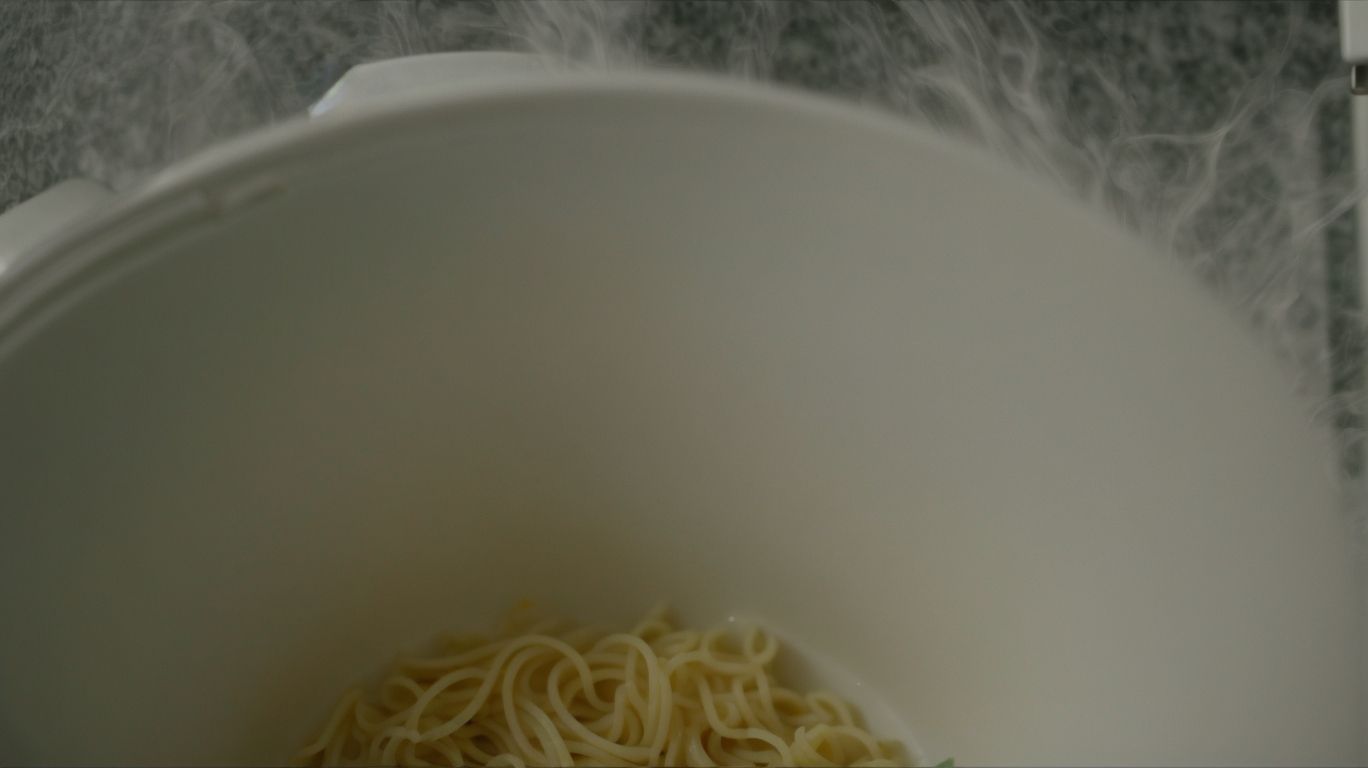
Credits: Poormet.Com – Richard Johnson
To cook pasta Al Dente, you will need basic kitchen equipment such as a pot for boiling water, a stove for heat, and a pasta strainer for draining the cooked pasta.
Having the right tools and techniques can take your pasta-making game to the next level. Controlling the heat properly while boiling the water is key to achieving that perfect Al Dente texture.
Consider investing in a good pasta pot with a built-in strainer to make the draining process more convenient, or a pasta cooker that allows for precise timing and temperature control. These specialized tools can greatly enhance your cooking experience and help you consistently produce delicious, perfectly cooked pasta.”
What Ingredients Do You Need to Cook Pasta Al Dente?
Simple yet quality ingredients like olive oil, sea salt, and flavorful sauces are key to preparing delicious and perfectly Al Dente pasta dishes.
Regarding achieving the ideal Al Dente texture, the quality of the ingredients used makes all the difference. High-quality olive oil not only adds depth of flavor but also helps prevent the pasta from sticking together during cooking. Sea salt, with its natural brininess, is essential for seasoning the pasta water, infusing each strand with a subtle yet distinct taste that enhances the overall dish.
Plus these basics, choosing the right sauce can elevate your pasta dish to new heights. Whether it’s a rich tomato and basil sauce, a creamy Alfredo, or a simple garlic and herb infusion, the sauce plays a crucial role in adding layers of flavor to your Al Dente pasta.
Step-by-Step Guide to Cooking Pasta Al Dente
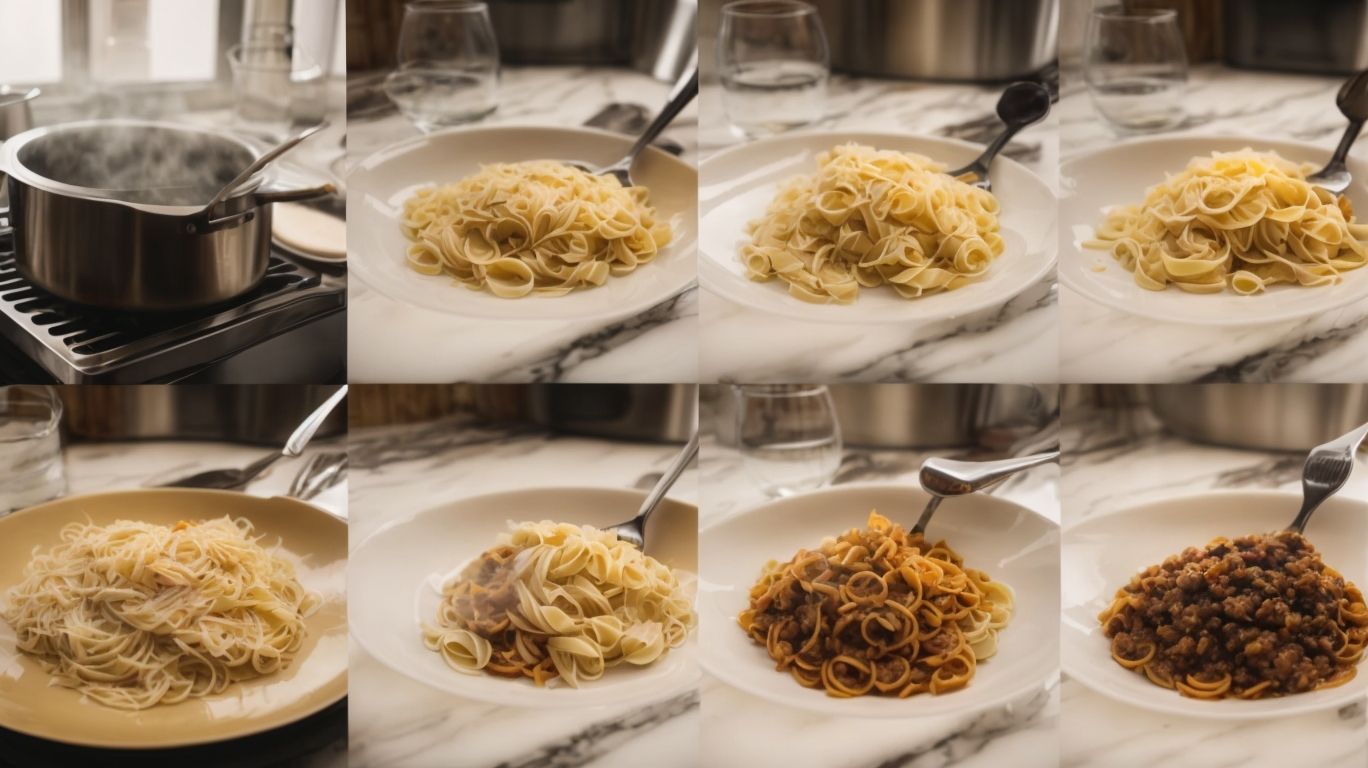
Credits: Poormet.Com – Gary King
Mastering the art of cooking pasta Al Dente involves precise steps that ensure the pasta is perfectly cooked and retains its ideal texture and flavor.
Step 1: Boil Water
The first step in cooking pasta Al Dente is to bring a pot of water to a vigorous boil, ensuring there is enough water to fully submerge the pasta.
When boiling water for pasta, it is crucial to use a large enough pot with plenty of water to prevent the pasta from sticking together. As a rule of thumb, aim for about 4-6 quarts of water for every pound of pasta being cooked. The vigorous boil is key here, as it helps to prevent the pasta from becoming mushy and ensures even cooking. Stirring the pasta occasionally during the cooking process can also help prevent clumping. Depending on the type of pasta, cooking times may vary, so always refer to the package instructions for optimal results.
Step 2: Add Salt
After the water reaches a boil, add a generous amount of salt to enhance the pasta’s flavor and seasoning during the cooking process.
Adding salt to boiling water is critical not just for flavor but also to season the pasta itself. The salt penetrates the pasta as it cooks, infusing each strand with a subtle salty taste that elevates the dish. It is recommended to use approximately 1-2 tablespoons of salt for every 4-6 quarts of water when boiling pasta. This salt quantity may vary depending on the type of pasta being cooked. For pasta dishes with delicate flavors, a lower amount of salt may be preferred to avoid overpowering the other ingredients. For heartier dishes, a slightly higher salt content can help balance out the flavors.
Step 3: Add Pasta
Carefully add the pasta to the boiling water, ensuring that it is fully submerged, and follow the recommended cooking time provided on the pasta packaging.
When adding the pasta to the boiling water, you want it to cook evenly. Different types of pasta require varying cooking times to achieve the perfect texture. Long, thin pasta like spaghetti or angel hair typically cooks faster than short, sturdy pasta shapes such as penne or rigatoni. Overcooking pasta can result in a mushy consistency, while undercooking leaves it too firm.
Timing plays a crucial role in determining the al dente perfection of your pasta. Al dente, meaning ‘to the tooth’ in Italian, refers to pasta that is cooked just enough to offer a tender bite with a slight firmness. To achieve this ideal texture, it’s essential to follow the specified cooking times closely.
Step 4: Stir Occasionally
During the cooking process, stir the pasta occasionally to prevent sticking and ensure even cooking, employing gentle stirring techniques to maintain pasta integrity.
Stirring pasta while it cooks is a crucial step that can significantly impact the final dish’s texture and taste. By stirring, you prevent the pasta from clumping together and sticking to the bottom of the pot, leading to a more pleasant dining experience.
Proper stirring techniques involve using a wooden spoon or pasta fork to gently agitate the pasta, making sure all strands are separate and well-coated in the cooking water. This method not only prevents sticking but also helps achieve that perfect Al Dente texture – tender yet slightly firm to the bite.
Step 5: Taste Test for Doneness
To check for doneness, sample a piece of pasta to assess its texture – it should be firm yet tender, indicating the perfect Al Dente consistency.
Al Dente pasta, an Italian term meaning ‘to the tooth,’ exemplifies pasta cooked perfectly. The desired texture involves having a slight firmness when bitten into, while still being tender and cooked through. Achieving this balance requires careful monitoring during the cooking process.
If the pasta feels too hard and crunchy, it needs more time to cook. On the other hand, if it is mushy or overly soft, then it is overcooked. Remember that pasta continues to cook slightly even after being drained, so it’s advisable to remove it from the heat just before reaching the desired texture.
Step 6: Drain Pasta
Once the pasta reaches the desired texture, promptly drain it using a colander or strainer, ensuring to shake off excess water to prevent overcooking.
Draining the pasta effectively is crucial in maintaining its Al Dente consistency, where the pasta remains firm to the bite. By removing excess water, you can prevent the pasta from getting mushy or losing its texture.
The process of draining allows the pasta to stop cooking immediately, preserving its ideal doneness. This step also helps in preventing the pasta from absorbing too much moisture, which could dilute the flavors of the sauce you’ll be adding.
Properly drained pasta ensures a flavorful and authentic Italian dining experience.
Step 7: Rinse Pasta (Optional)
Rinsing cooked pasta is optional and primarily used to cool the pasta quickly if it won’t be immediately served, as rinsing can remove some starch and affect sauce adhesion.
Some chefs prefer to rinse pasta after cooking to stop the cooking process and prevent it from becoming mushy. It’s important to note that rinsing can also wash away flavorful starches that help sauces cling to the noodles. If you want a more cohesive dish, skipping the rinsing step might be beneficial.
On the other hand, rinsing pasta can be advantageous when preparing cold pasta salads or dishes where you want each noodle to be separate and prevent clumping. The cold water halts the cooking process, creating a firm texture.
Common Mistakes When Cooking Pasta Al Dente
Avoiding common mistakes such as overcooking, undercooking, or neglecting key steps can ensure your pasta turns out perfectly Al Dente every time.
One crucial aspect to keep in mind is to regularly stir the pasta while it’s cooking. Neglecting this step can lead to uneven cooking, resulting in some parts being overcooked while others are undercooked.
Another mistake to steer clear of is adding oil to the boiling water. While this may seem like a good idea to prevent sticking, it can actually inhibit the sauce from clinging to the pasta properly.
To avoid overcooking, make sure to test the pasta a few minutes before the recommended cooking time. It’s better to have it slightly undercooked as you can always finish the cooking process in the sauce.
Not Using Enough Water
One common mistake is not using an adequate amount of water when boiling pasta, which can lead to overcrowding and uneven cooking results.
Insufficient water can cause the pasta to stick together and result in a gummy, unpalatable texture. To achieve the desired Al Dente consistency, it is essential to have enough water in the pot to allow the pasta to move freely and cook evenly.
Water-to-pasta ratio plays a critical role in pasta cooking; for optimal results, experts recommend using 4-6 quarts of water per pound of pasta. This generous amount of water helps prevent clumping and ensures the pasta has enough space to swell and cook uniformly.
Not Adding Salt to the Water
Neglecting to add salt to the boiling water can result in bland pasta dishes, as salt enhances the pasta’s flavor profile and seasoning during cooking.
Adding salt to the pasta water not only seasons the pasta itself but also helps to enhance the overall flavor of the dish. The salt penetrates the pasta as it cooks, ensuring that each bite is perfectly seasoned. Salt plays a crucial role in altering the boiling point of water, which affects the pasta’s texture, allowing it to cook evenly and preventing it from becoming mushy.
When selecting salt for pasta water, opt for coarse kosher salt or sea salt over fine table salt, as they distribute more evenly in the water. The general rule of thumb is to add about 1-2 tablespoons of salt per gallon of water, but you can adjust this based on personal preference.
Overcooking the Pasta
Overcooking pasta beyond the Al Dente stage can lead to mushy, unappealing textures, highlighting the importance of precise timing and monitoring during cooking.
When pasta is overcooked, it loses its firmness and becomes limp, affecting the overall dining experience. The starch in the pasta starts to break down further, making it sticky and clumpy. This diminishes the texture and taste of the dish, resulting in a less enjoyable meal for you and your guests.
To avoid overcooking, ensure that you set a timer and regularly check the pasta towards the end of the cooking time. Following the package instructions for cooking times is a good starting point, but tasting the pasta is the most reliable way to determine its readiness.
When pasta reaches the perfect consistency, it should be firm to the bite but still tender. You can also look for visual cues like the pasta becoming slightly translucent around the edges, indicating it is almost done. These signs help you achieve that desired balance between a soft exterior and a slightly chewy center.
Not Stirring the Pasta
Failing to stir pasta while cooking can result in clusters or clumps, unevenly cooked portions, and may lead to inconsistent Al Dente textures across the dish.
Stirring pasta during the cooking process is a critical step that ensures each strand or piece cooks evenly. To achieve the perfect Al Dente texture, it’s essential to stir the pasta regularly. By stirring, you prevent sticking and encourage even heat distribution. One effective technique is to use a long-handled spoon or tongs to gently separate the strands as they cook. Consistent stirring helps prevent the pasta from clumping together and promotes a smooth, uniform texture.
Tips for Cooking Perfect Pasta Al Dente
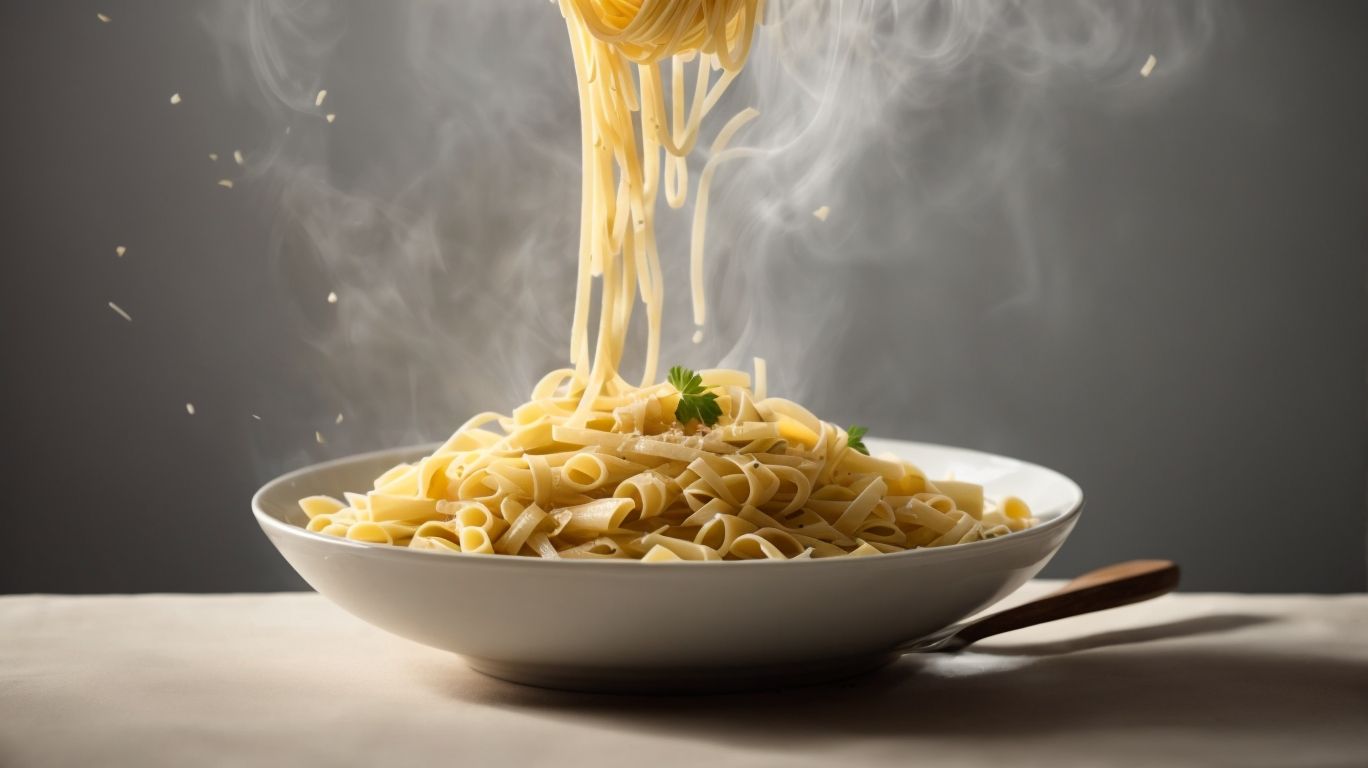
Credits: Poormet.Com – Billy King
Follow these expert tips to ensure your pasta is cooked perfectly Al Dente every time, from using a timer to tasting for doneness throughout the cooking process.
When cooking pasta to reach the magical Al Dente texture, it’s crucial to pay attention to the water temperature. Bringing the water to a rolling boil before adding the pasta helps in preventing sticking and ensures even cooking. Using a generous amount of salt in the water not only enhances the flavor of the pasta but also aids in seasoning it uniformly.
Remember, precision is key when cooking pasta; following package instructions to determine the optimal cooking time will greatly assist in achieving that desirable Al Dente consistency.
Use a Timer
Utilizing a timer is a simple yet effective way to track the cooking time of your pasta and ensure it reaches the perfect Al Dente consistency.
Timers provide a foolproof method to prevent overcooking or undercooking, allowing you to achieve that delightful firmness without any guesswork. By setting the timer according to the package instructions or your preferred doneness level, you can consistently cook pasta just the way you like it. Using a timer frees you from constantly checking the clock, giving you more time to prepare complementary dishes or enjoy a relaxing moment while your pasta cooks.
Taste Test Frequently
Regularly tasting the pasta during the cooking process allows you to gauge its texture and adjust cooking times to achieve the desired Al Dente result.
Engaging in taste testing while preparing pasta not only enhances your cooking experience but also enables you to understand the progression of the pasta’s doneness with each taste. By taking small samples and assessing the firmness of the pasta, you can ensure it is neither undercooked nor overcooked.
This hands-on method enables you to fine-tune the cooking process according to your preferences. The art of pasta making involves subtle nuances that can transform a simple dish into a culinary delight, and taste testing is a key aspect of mastering this art.
Follow Package Instructions
Adhering to the pasta package instructions regarding cooking times and techniques can serve as a reliable guide for achieving consistent Al Dente pasta results.
These instructions are designed by the manufacturers to ensure that the pasta reaches the perfect texture and flavor profile. They provide valuable insights on the type of pasta, recommended cooking times, and specific techniques for best results. By following these guidelines, you can avoid under or overcooking the pasta, which can significantly impact its taste and texture.
Interpreting the packaging information for Al Dente preparation involves understanding that the pasta should be cooked until it is firm to the bite but still tender. This delicate balance is what gives Al Dente pasta its signature texture and mouthfeel.
Conclusion: Enjoy Your Perfectly Cooked Pasta Al Dente!
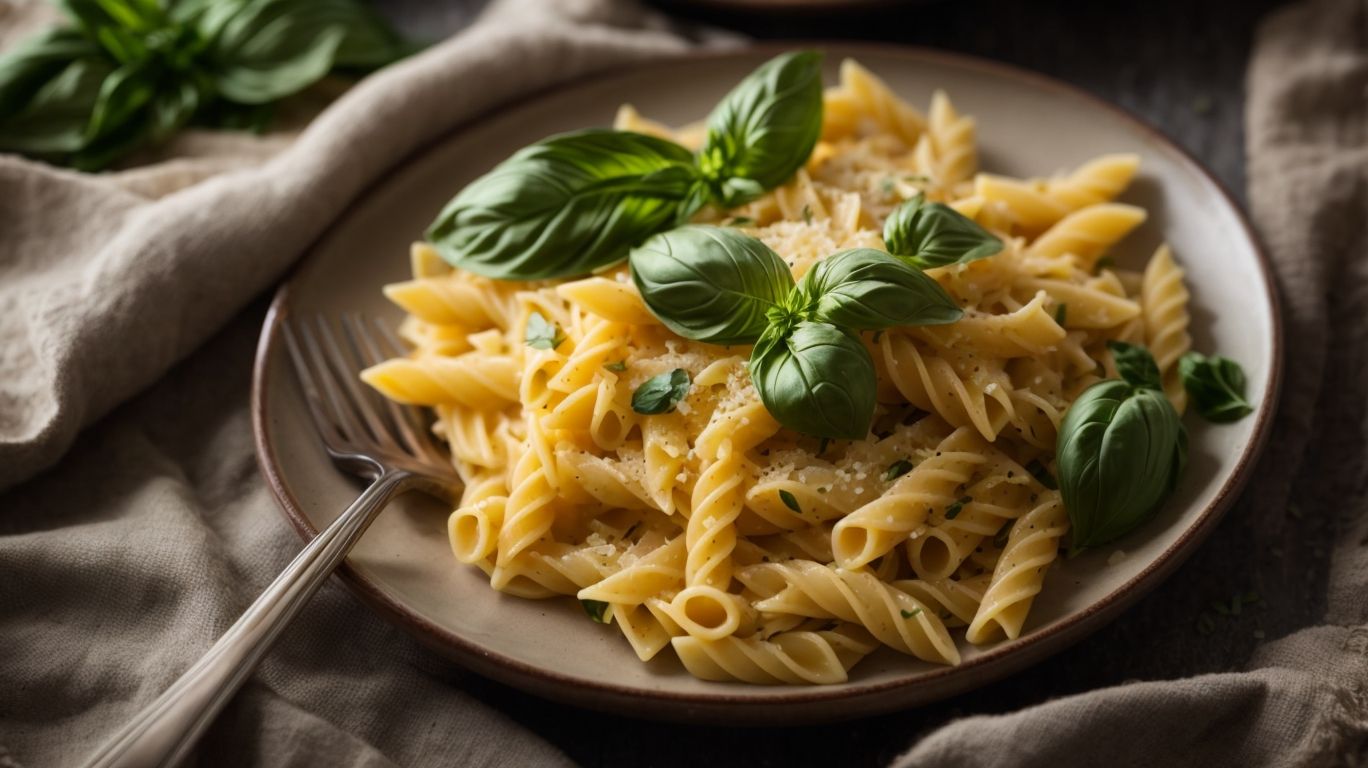
Credits: Poormet.Com – Jacob Roberts
Mastering the art of cooking pasta Al Dente not only enhances the pasta’s texture and flavor but also pays homage to the rich Italian culinary tradition of perfecting this cooking technique.
Al Dente, a term derived from Italian meaning ‘to the tooth,’ represents the ideal balance between softness and firmness in pasta. This traditional cooking method allows the pasta to retain a slight bite, ensuring a more satisfying eating experience. By respecting this practice, one not only honors Italian culinary heritage but also elevates the dish’s flavors to new heights. The joy of savoring a perfectly Al Dente pasta dish lies in the harmonious blend of ingredients and the nuances of time-tested recipes passed down through generations.
Frequently Asked Questions
What does it mean to cook pasta to al dente?
Al dente means “to the tooth” in Italian and refers to pasta that is cooked to a firm and slightly chewy texture.
Why is it important to cook pasta to al dente?
Cooking pasta to al dente ensures that the pasta maintains its shape and texture, making it more enjoyable to eat. Overcooked pasta becomes mushy and loses its flavor.
What type of pasta is best for cooking to al dente?
Pasta with a long, thin shape, such as spaghetti or linguine, is best for cooking to al dente. Short pasta shapes, like penne or farfalle, are better for creamy or saucy dishes.
How can I tell if my pasta is cooked to al dente?
The best way to check if your pasta is al dente is to taste it. It should be slightly firm but still tender. You can also cut a piece of pasta in half and check the center for a small white dot, which means it is not fully cooked yet.
Can I still cook al dente pasta if I don’t have a timer?
Yes, you can cook al dente pasta without a timer. Simply follow the recommended cooking time on the package and then taste the pasta a minute or two before the timer goes off. Keep tasting until it reaches your desired texture.
What should I do if my pasta is overcooked and not al dente?
If your pasta is overcooked and not al dente, you can try to salvage it by quickly rinsing it with cold water to stop the cooking process. You can also add some olive oil or butter to help separate and loosen the noodles.


